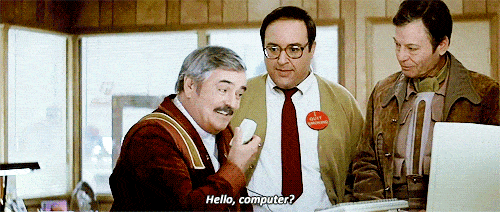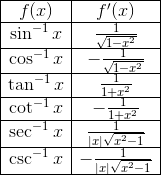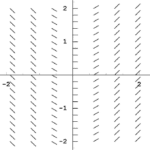Note: This article accounts for all the changes made to the AP Computer Science A Exam during its last revision in Fall 2010. For students studying for the May 2017 exam, it is best to use study materials dated Spring 2011 or later. Please disregard any study materials dated 2003 or earlier, as the exam required students to use C++. Since 2004, the course and exam have required students to use Java.
Well Magooshers, I’m sorry to say it, but for the 44th consecutive year, rocker Alice Cooper was woefully incorrect about school being out forever. School days are here again, and for you high school students out there, that means brand-spanking new AP classes.
For a few of you, Computer Science A is in the cards this year. Maybe you want to go on to major in computer science. Or maybe you’re undecided about your future, but you know you want to work with technology. No matter the reason, you’ve signed up for a challenging course with many real-world applications.

In this article I’ll go over the AP Computer Science A Exam, giving you all the essential details about what you can expect on exam day. If you get to the end and still have questions, make sure to check out the official College Board website for Computer Science A!
How You’re Assessed on the Exam
AP Computer Science A is focused on six big ideas that are comprised of many different topics. Below are the big ideas and a summary of some of the topics. In no way is this list a detailed study guide, just a glimpse of what you will see in the course.
- Object-Oriented Program Design
- Creating a program to solve a specific problem.
- Program Implementation
- Creating reusable programs
- Program Analysis
- Testing and analyzing the usefulness of programs.
- Standard Data Structures
- How data represents information in a program.
- Standard Algorithms
- Analyzing program efficiency.
- Computing in Context
- Ethical implications of computing technology.
To be successful in AP Computer Science A and the exam, the College Board recommends two prerequisites: a first-year algebra course and an English course. The latter is important because accurate documentation is a skill necessary to do well in the course and on the exam.
Successful Time Management
In this section, I will break down the length of the AP Computer Science A Exam and offer suggestions on how to make sure you successfully finish each section of the test. First, as I always say in my ACT articles: take multiple timed practice tests to become used to the tests’ format, content, and pacing. For students with a College Board account, a full-length test is available for you to take right now.
Section I: Multiple Choice (40 Questions, 75 Minutes, 50% of Exam Score)
First, take a look at my article on ACT Time Management. The same basic rules apply to the AP Computer Science A Exam’s multiple-choice section. You have approximately one minute and 50 seconds to answer each question. Fortunately for you, the AP Computer Science Exam is graded the same way as the ACT. Only correct answers count. If you’re stuck on a question and one minute and 50 seconds have passed, it’s time to guess and move on.
Now, I understand that it’s impossible to exactly time one minute and 50 seconds, especially when you have more important things to do like answer questions. There are ways to get around this. In short, check how many questions you have answered at the end of 15 minutes. If you’ve answered eight questions, you’re on track. Any less than that and I’d recommend more practice tests between now and test day to improve your time.
Break (10 Minutes)
Break is an important time during any AP Exam. AP Computer Science A is a three-hour exam and you’re going to need a lot of energy for Section II. In short, go to the bathroom, drink some water, and have a snack.
Section II: Free Response (4 Questions, 105 Minutes, 50% of Exam Score)
To say the least, Section II of the AP Computer Science A Exam asks test takers to do a lot! You have 25 minutes and 15 seconds for each question. Here’s my advice on how to best use your time.
- 5 Minutes: Read the problem take notes on your scratch paper. Though your final responses must be typed into the computer, scratch paper is a great way to preserve ideas or other important information.
- 20 Minutes: Answer the question. As these questions will likely have parts a, b, c, etc, make sure that you are not spending too much time on any one part.
Section II Pro-Tip: If you’ve taken multiple timed practice tests and are comfortable with time management, try to squeeze in the last 2-3 minutes to review your code! Even if the correct answer is in your mind, the stress of the situation might cause you to leave out important information in your replies. If you have time to catch these mistakes, you can fix them.
Test Content: Section I (Multiple Choice)
As the exam in its current form is over five years old, the questions that appeared on previous years’ exams are still a valid way to prepare for test day. Expect to see old AP Computer Science A Exam questions throughout the year on your unit tests.
The multiple-choice questions will test your Computer Science knowledge in many different ways. Most of the questions are ‘stand alone,’ meaning that the code you analyze to answer a question does not apply to the next question. Yet throughout the multiple choice section you will discover some questions grouped together. Whether the questions are grouped or by themselves, read the questions first before reading the code.
One last thing about time management: If you’re comfortable with time management on the SAT or ACT, you should have little to no trouble with the AP Computer Science A Exam’s multiple-choice sections. Even so, remember my previous advice: if necessary, guess and move on.
Test Content: Section II (Free Response Questions)
Like some of the questions on the Multiple Choice section, to answer the Free Response questions, you will need to analyze textual, graphic, and code data.
Besides understanding Java, success on this section relies on your ability to apply what you have learned to real-life situations that computer programmers routinely face at their jobs. Projects you complete through AP Computer Science A should reflect Section II’s difficulty level and expose you to the everyday ways coding assists people and businesses.
The End
AP Computer Science A is a course traditionally taken by high school upperclassmen. After the exam is over, you have summer break or graduation to look forward to. Yet as you sun by the pool, flip burgers, or pack for college, AP graders across the country are reading your replies and assessing your computer science knowledge. In short…
The College Board will release AP Computer Science scores in early July.
Yep, one day in the middle of summer you’ll get an email saying that your scores are ready on your College Board account. For those of you that earn a 5, congratulations. You just earned yourself a semester’s worth of college credit!

Though a 4 is perfectly acceptable AP score for many other classes, colleges around the country are sticklers when it comes to comes to AP Computer Science A. After you’ve been in the course for a while, you will understand that a lot of precision is involved. If there are gaps in your knowledge, you are unlikely to excel in a second-semester computer science course.
Well, that’s about it for AP Computer Science A. For those of you starting your computer science journey this year, best of luck in your coding endeavors!
Till next time, Magooshers.





Leave a Reply